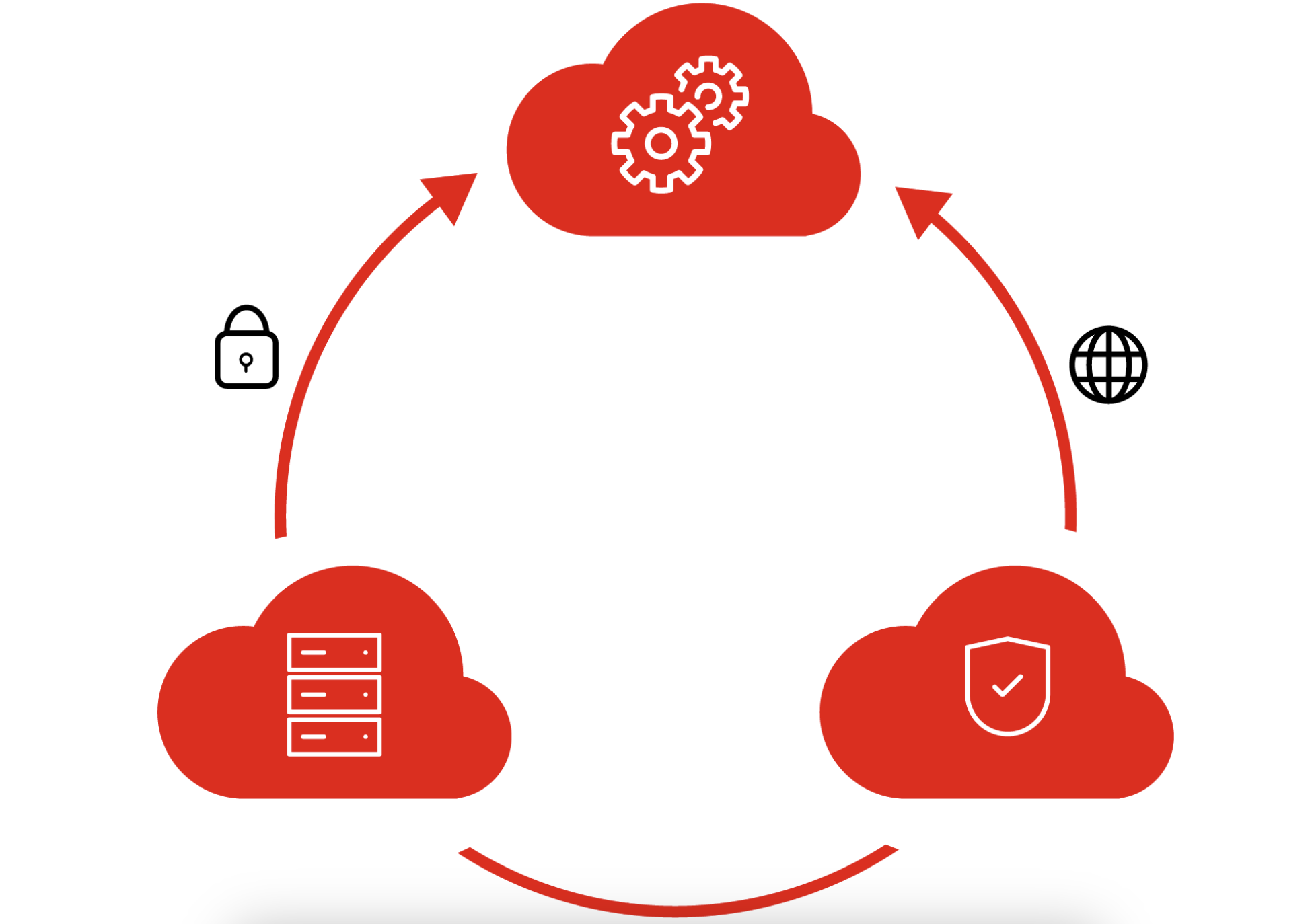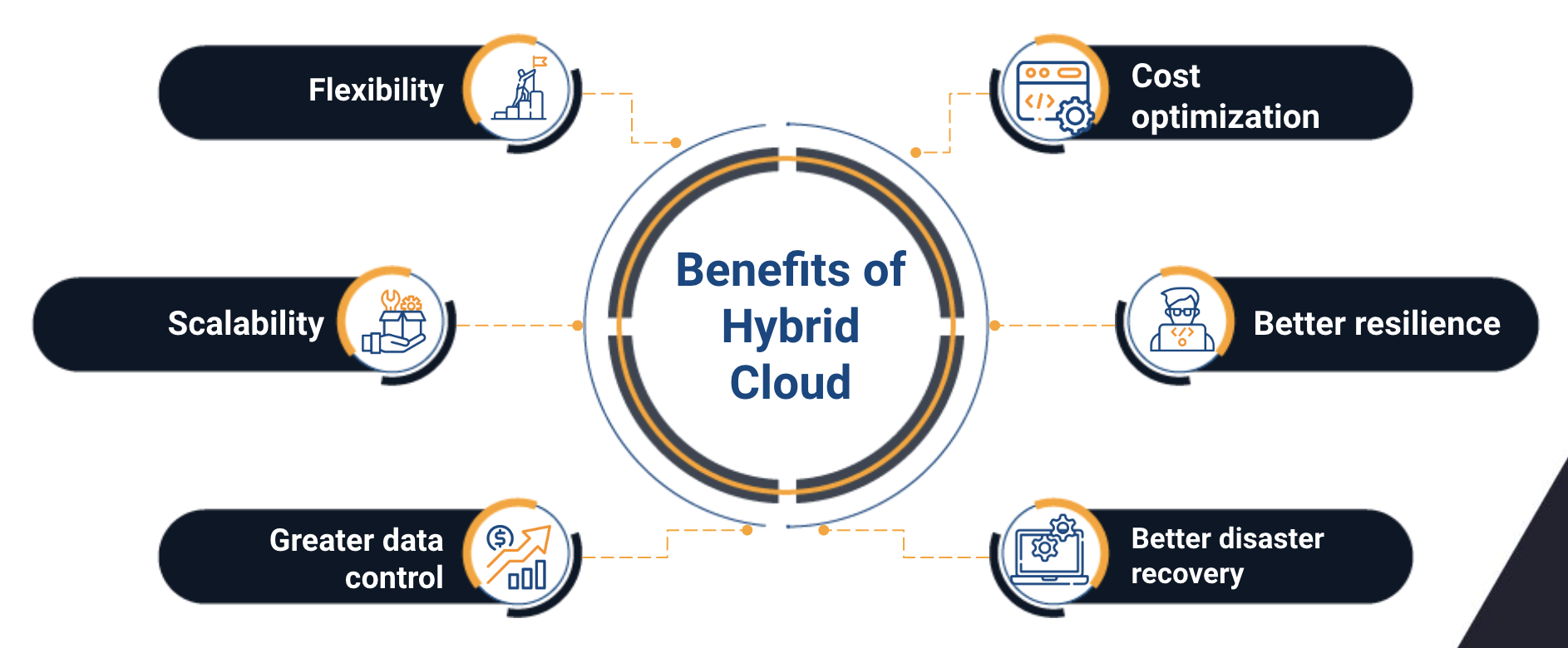
Digital transformation is a priority, and adopting a hybrid cloud infrastructure has become a key strategy to stay competitive. A hybrid cloud combines the best of the public and private cloud, offering organizations greater flexibility, scalability, and control over their resources.
However, to make the most of this technology, it is essential to have the right platform. Red Hat, a leader in open source solutions, offers tools and technologies that facilitate the adoption and management of a hybrid cloud in an efficient and secure way, helping companies optimize costs and accelerate their innovation.
In this blog, we are going to explain everything about what hybrid clouds are and how Red Hat can help in this regard.

What is a hybrid cloud?
A hybrid cloud is an infrastructure that combines public and private cloud, allowing data and applications to be shared between the two. This approach offers the best of both worlds: the scalability and cost-effectiveness of the public cloud, along with the control and security of the private cloud. Companies can choose which workloads to handle in each environment, giving them greater flexibility to adapt to their specific needs.
Hybrid clouds allow organizations to optimize operational efficiency while meeting security and compliance requirements. This flexibility is especially important in highly regulated industries, such as finance or healthcare, where sensitive data must remain in secure environments, but applications can benefit from the scalability of the public cloud.
Key Benefits of Hybrid Cloud
Adopting a hybrid cloud offers a number of advantages that can be key for any company looking to digitize its operations. Key benefits include:
Flexibility and scalability: By allowing companies to distribute their workloads between the public and private cloud, they can easily scale based on demand without having to worry about capacity issues.
Greater control over data: Sensitive data can be kept in the private cloud while less critical operations can be moved to the public cloud, ensuring security and compliance.
Cost optimization: Organizations only pay for the resources they use in the public cloud, while more critical and sensitive applications can run in a controlled private environment.
Better resilience and disaster recovery: Companies can benefit from a disaster recovery approach using both the public and private cloud, ensuring critical data is available even in the event of a failure.

Why is Red Hat the best choice for hybrid cloud?
Red Hat is a leader in open source solutions and has developed a number of technologies that facilitate hybrid cloud adoption. Its Red Hat OpenShift platform is one of the most widely used platforms for container orchestration, facilitating the deployment and management of applications across multiple environments.
Red Hat offers solutions designed specifically for hybrid cloud, providing the flexibility needed to manage complex environments. In addition, its open source solutions ensure interoperability and avoid vendor lock-in.

Benefits of using Red Hat to adopt a hybrid cloud include:
Interoperability across environments
Red Hat solutions enable organizations to integrate multiple clouds, facilitating the seamless movement of applications between the private and public cloud.
Kubernetes support
Red Hat OpenShift is built on Kubernetes, ensuring scalability and efficiency in container management.
Enterprise support
Red Hat offers robust enterprise-grade technical support, helping businesses keep their hybrid environments running smoothly.

Red Hat OpenShift: The Container Standard for Hybrid Cloud
Red Hat OpenShift is a Kubernetes-based container platform that enables organizations to efficiently manage applications across multiple clouds. This is crucial for a hybrid cloud, where businesses often face the challenge of balancing workloads between the public and private cloud. With OpenShift, businesses can:
- Rapidly deploy applications in any environment
- Maintain consistency in application management across multiple clouds
- Automatically scale applications based on demand
OpenShift also makes it easier to deploy microservices-based applications, which can improve an organization's agility by allowing applications to be developed and updated more quickly.
Red Hat Ansible: Hybrid Cloud Automation
Automation is a key component to any successful hybrid cloud strategy, and Red Hat Ansible is one of the most powerful tools in this field. Ansible enables organizations to automate repetitive and complex tasks, from server management to application deployment. This not only saves time, but reduces the risk of human error.
By using Ansible, businesses can ensure that their hybrid cloud environments are optimized and easier to manage. Automation also helps organizations meet security and compliance requirements more effectively.
Hybrid Cloud Security with Red Hat
One of the biggest challenges facing organizations adopting hybrid cloud is maintaining security across multiple environments. Red Hat offers a number of tools and solutions that help mitigate these risks. With Red Hat, organizations can:
- Ensure sensitive data remains protected in the private cloud
- Implement consistent security controls across the hybrid cloud infrastructure
- Monitor and manage threats in real time
Red Hat also offers solutions to meet the most stringent regulatory standards, which is essential for industries such as healthcare or finance, where data protection is paramount.

Red Hat and integration with other clouds
One of Red Hat's biggest advantages is its ability to integrate with other public cloud solutions, such as AWS, Google Cloud, and Microsoft Azure. This allows organizations to choose the public cloud that best suits their needs, without worrying about compatibility or application migration.
With Red Hat, companies can build a truly flexible hybrid infrastructure, where applications and data can move between multiple environments seamlessly. This also facilitates cost optimization, as companies can take advantage of the most competitive rates offered by different public cloud providers.
Hybrid Cloud with Red Hat, a Path to Innovation
Adopting a hybrid cloud with Red Hat allows companies of any size and sector to take advantage of the best of both worlds: the flexibility and scalability of the public cloud together with the security and control of the private cloud. Red Hat, with its focus on open source solutions and its robust OpenShift platform, provides the tools necessary for organizations to efficiently manage hybrid environments.
With Red Hat, companies can not only reduce costs and improve operational efficiency, but they can also accelerate innovation by adopting container, automation, and microservices technologies. This positions them to face the challenges of the future and take advantage of the opportunities offered by digital transformation.

